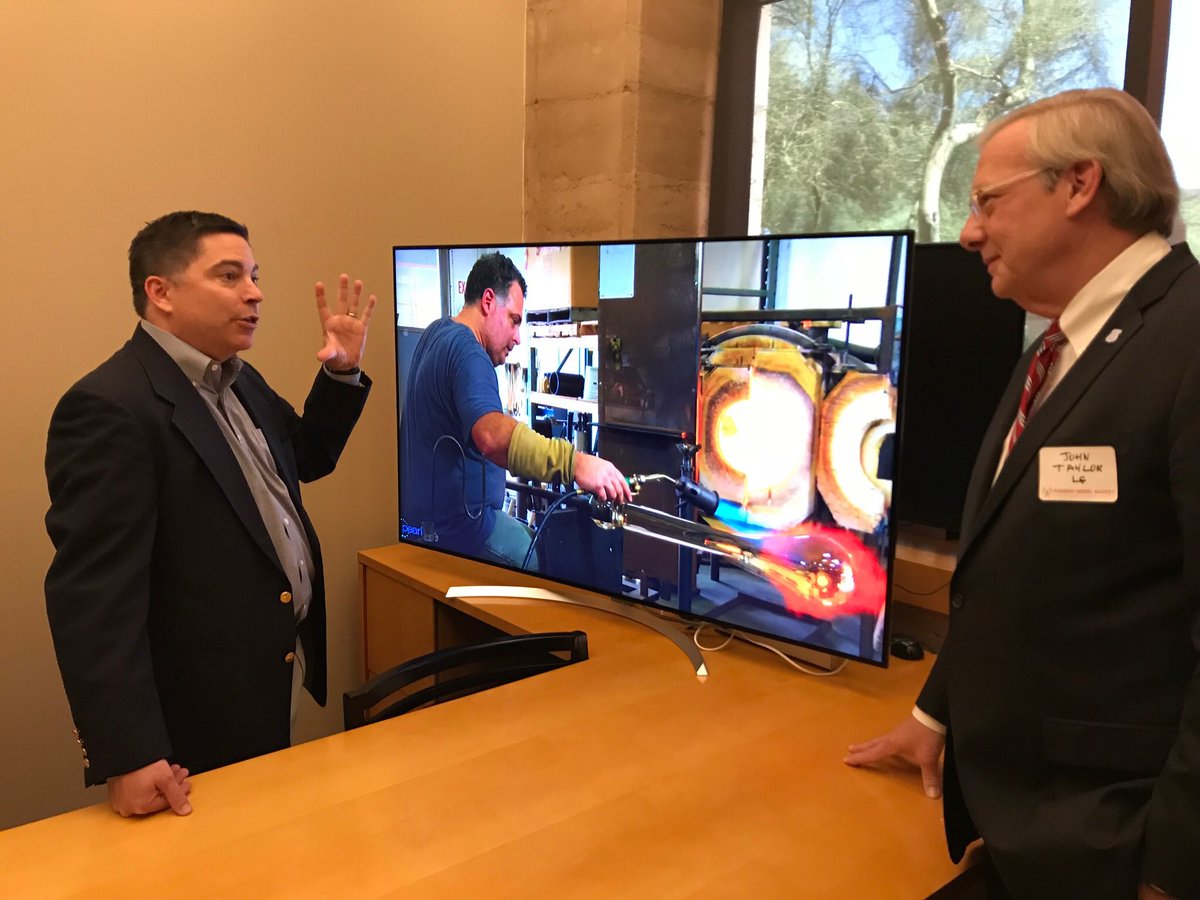O'Rielly: FCC Not Showing Favoritism Towards Sinclair
WASHINGTON—FCC Republican Commissioner Michael O’Rielly lashed out at critics who claim that the commission’s actions since the beginning of the Trump administration are designed to help one broadcast company seeking a well-publicized merger: Sinclair.
In a blog post, O’Rielly used the occasion of a trip to Phoenix last week to respond to opponents of Sinclair’s proposal to acquire Tribune Media for $3.9 billion, giving the Baltimore station group control of 210 stations (following its recent proposal to sell off 23 of its stations). The purpose of his trip was to review progress of the 12 TV stations participating in the Phoenix Model Market for ATSC 3.0.

“Seeing this collaboration was impressive in and of itself,” O’Rielly said, “but it also emphasized what I already knew to be the case: that ATSC 3.0 may very well be a game changer for our nation’s broadcasters. Unfortunately there is a false narrative in Washington D.C. that ATSC 3.0 will only benefit one particular company. In fact, this narrative goes even further, suggesting everything the Commission has done in the media space over the last 17 months has been to benefit one company, in this case, Sinclair Broadcast Group.”
O’Rielly called such a narrative a “misguided fantasy” and a “rhetorical tool tool designed to divert attention from opponents’ lack of substantive objections to the underlying policies, combined with what seemingly appears to be an extreme personal dislike for the company itself.”
[Read: Sinclair Broadcast, One Media To Deploy Next Gen TV]
O’Rielly defended Chairman Ajit Pai’s actions, noting they were designed to “reduce the labyrinth of outdated and costly media rules that no longer make sense today,” noting that the marketplace broadcasters are competing against today include the likes of Netflix and Amazon.
He noted that the elimination of the main studio rule was not some “master conspiracy theory” that he likened to “Area 51 territory,” but that in reality, the benefits of doing away with the rule went to small and mid-sized radio stations. “The elimination of the unnecessary rule hasn’t let to great studio consolidation or closures,” he said. “Instead, it was and is about permitting cost efficiencies—without harm to localism—for all broadcasters, which will occur over a longer time frame.”
Get the TV Tech Newsletter
The professional video industry's #1 source for news, trends and product and tech information. Sign up below.
The commission’s reinstatement of the UHF discount, O’Rielly said, was simply a reversion of the “status quo,” and whether or not the action helps Sinclair is “irrelevant.” He also said that the elimination of the radio/television cross ownership rule provides “little to no benefit” to Sinclair and that while he thinks that the commission’s adoption of a waiver process to allow duopolies in a market, even if both stations are among the top four in terms of audience share is less than ideal due to the potential of abuse, he is willing to delay a larger examination of the rules until the commission’s 2018 Quadrennial review of ownership rules is completed.
Repeating comments’ from 2016 to justify his argument, O’Rielly said then, “To say [the duopoly rule] is still needed in an era of literally hundreds of competitive pay TV channels and essentially unlimited competitive Internet content defies belief.”
Turning his attention to Next Gen TV, O’Rielly responded to critics who said the commission’s approval of ATSC 3.0 would give preferential treatment to Sinclair due to its portfolio of patents for the new standard. He reiterated his position “against including any portion of the standards in our rules,” and instead supported the elimination of rules “prohibiting broadcasters from moving to ATSC 3.0.”
[Read: Phoenix Model Market Launches Next Gen TV Broadcasts]
O’Rielly also noted that the standard was developed and vetted by the private sector and that adoption of the standard is voluntary. “The new standard promoted real benefits for consumers—such as ultra high-definition pictures and enhanced emergency alerting,” he said. “But, if consumers are uninterested in these features, they will not be forced to adopt them.”
O’Rielly drove the point home that the FCC’s actions during the past year and a half were designed to enhance the entire broadcast industry’s competitive in today’s media marketplace and not to give one company a leg up on its competition.
“The entire debate misses the bigger picture that I witnessed firsthand in Arizona,” the commissioner said. “That the changing marketplace is causing tremendous challenges to legacy broadcasters forced to abide by outdated and irrelevant ownership limitations and Commission rules.”
For a comprehensive list of TV Technology’s ATSC 3.0 coverage, see our ATSC3 silo.
Tom has covered the broadcast technology market for the past 25 years, including three years handling member communications for the National Association of Broadcasters followed by a year as editor of Video Technology News and DTV Business executive newsletters for Phillips Publishing. In 1999 he launched digitalbroadcasting.com for internet B2B portal Verticalnet. He is also a charter member of the CTA's Academy of Digital TV Pioneers. Since 2001, he has been editor-in-chief of TV Tech (www.tvtech.com), the leading source of news and information on broadcast and related media technology and is a frequent contributor and moderator to the brand’s Tech Leadership events.

